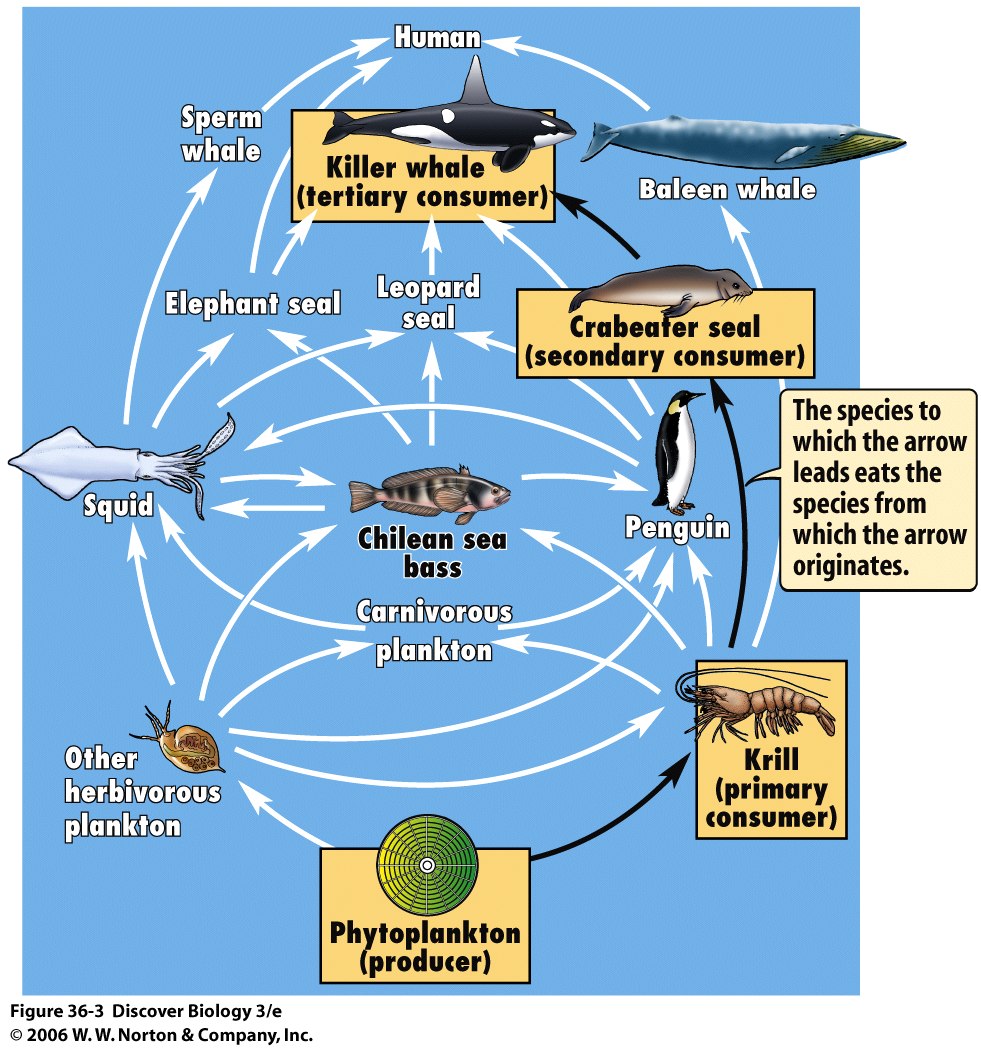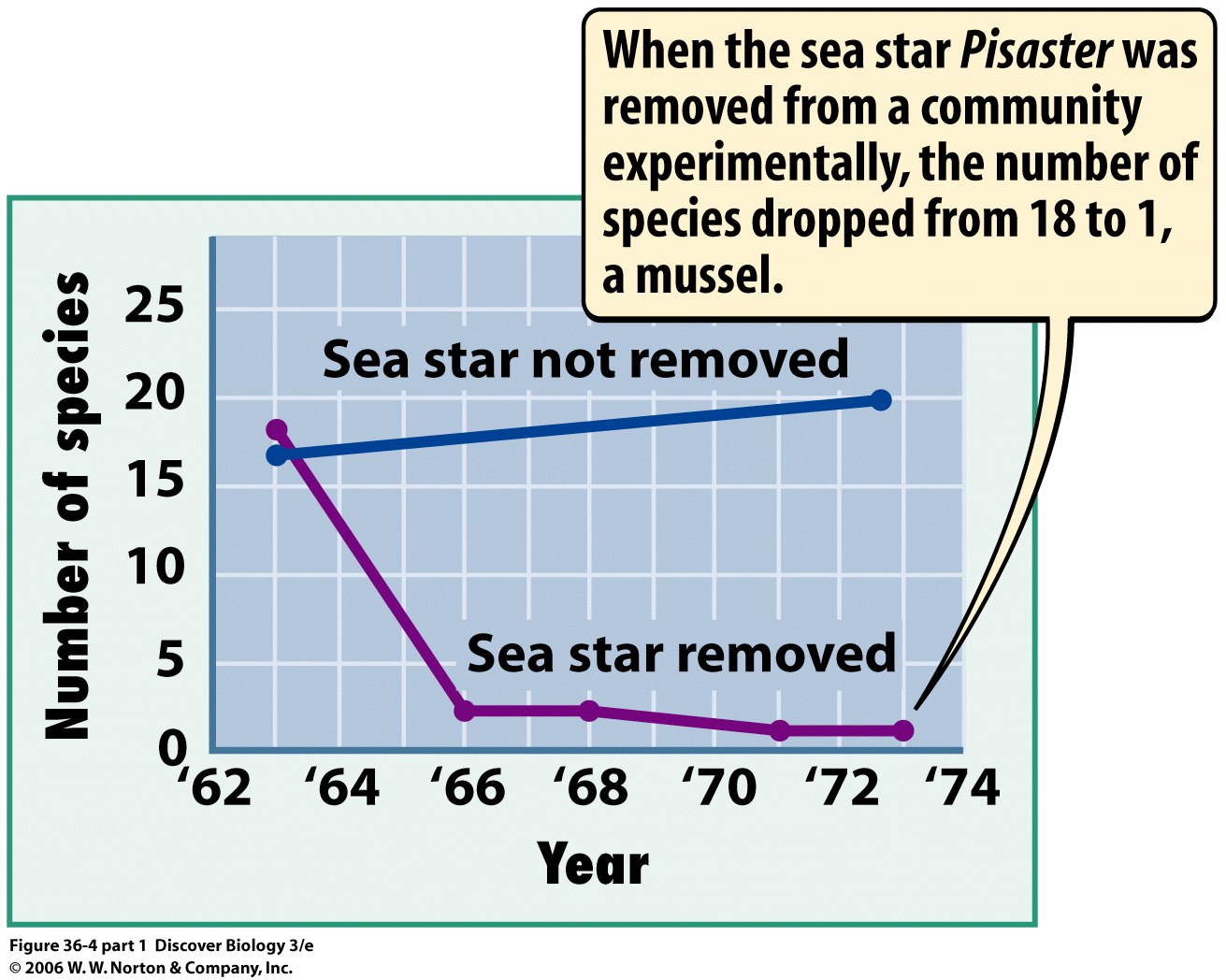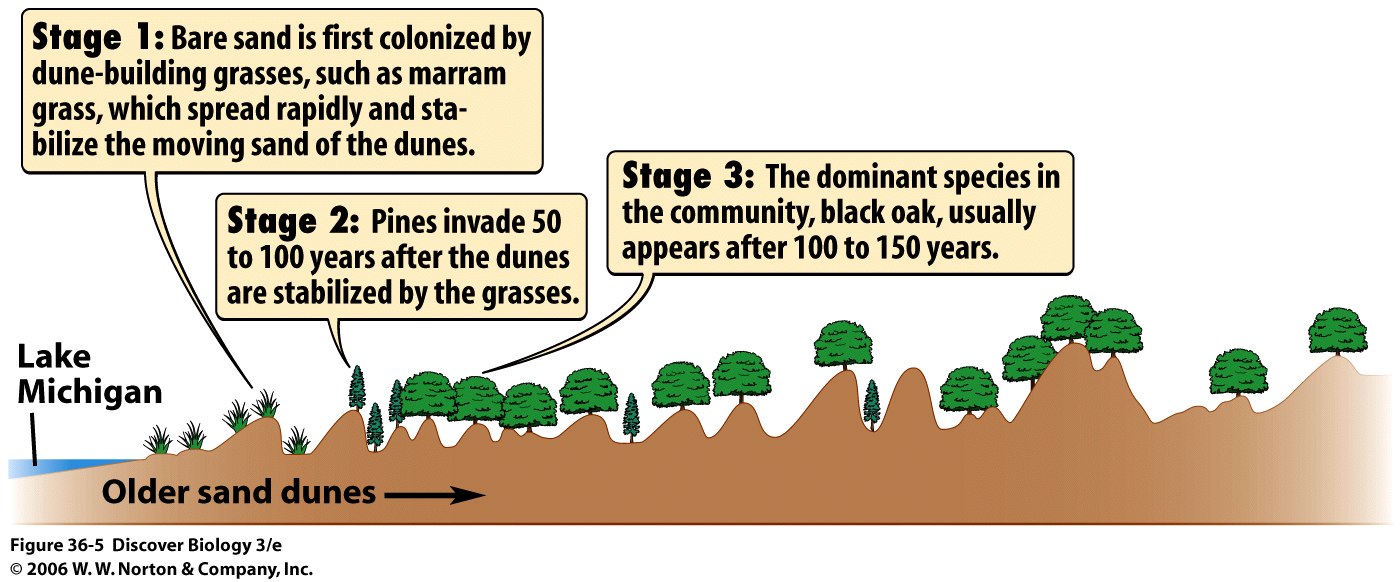BIO 7: Lecture 32 Preview
Competition is a form of interaction between species where both are trying to use limited resources in the same area.
Competition has different possible outcomes. (Pictures are from another text.)
Populations in the same habitat and using the same resources may occupy different niches.
Feeding relationships in a community are represented as organisms occupying trophic levels in a food chain. (Pictures from a different text.)
A more realistic view is that organisms have feeding interactions in a food web, with many interconnected food chains.

Communities are most productive and probably most stable when there is a lot of biodiversity.
Biodiversity is high when there is a lot of genetic variation within species, a lot of different species in the community, and a large area for the community to live in.
Why does that make sense when you look at a food web and consider community interactions?
Keystone Species are those that have a large effect on other species in a community.

Community interactions + changes in climate often result in community successions, where the populations and physical environment become more suitable for other species and one community is replaced by another. This takes hundreds of years.
You may get a better understanding of the change over time by viewing a stop-action animation 36.2 on your text's website.

What are ways that the plants change the physical environment?
What are ways that animals change the physical environment?
What are ways that fungi and bacteria change the physical environment?
The final outcome in any given area depends on physical factors present for the long run, such as climate and soil type. Climatic factors like average temperature ranges and precipitation in each season affect how molecules in organisms can function and affect which organisms can survive. Areas with similar climates have similar looking communities and ecosystems. Types of ecosystems around the world have been characterized as biomes, based on climate, soil, and communities.
Similar biomes are found at similar latitudes and similar elevations.